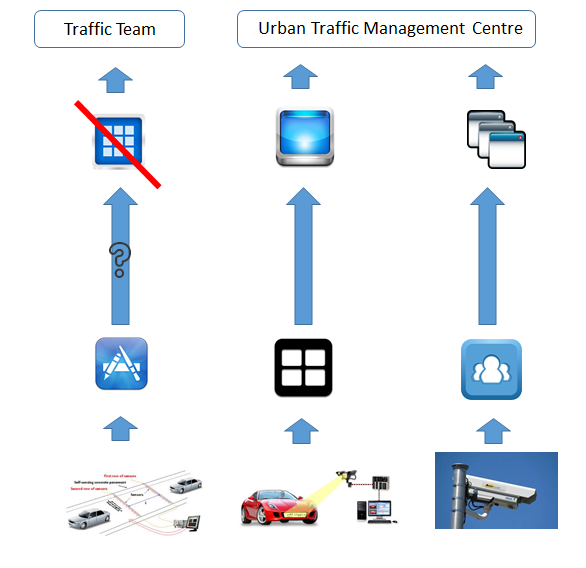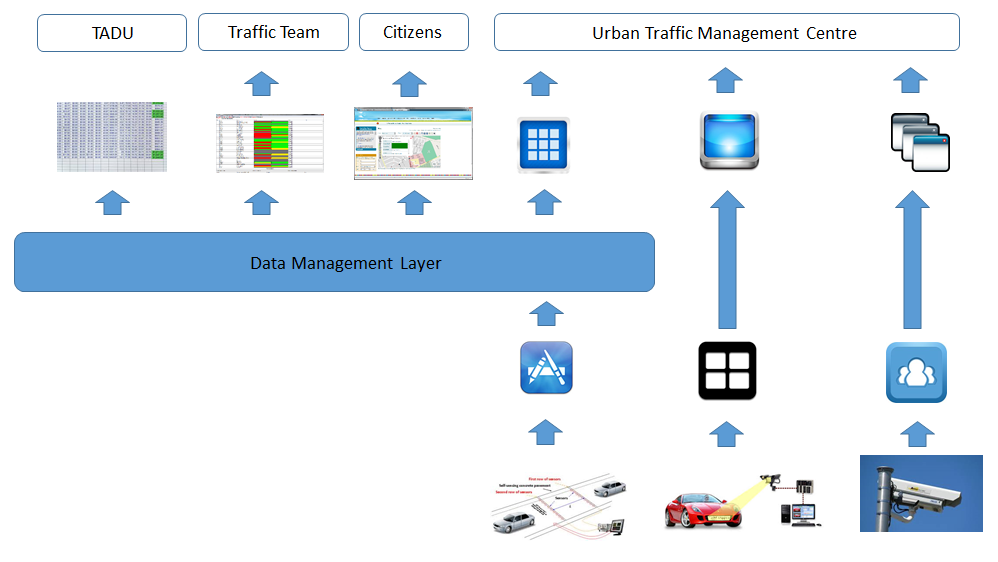Case Study: The Newcastle City Council Speed Management Network
The case study which follows describes an example in which a Data Management Layer has been introduced to Newcastle City Council. The example illustrates that adding a Data Management Layer need not be a disruptive process. It can be achieved incrementally and can produce immediate benefits which encourage further progress.
The Newcastle City Council Speed Management Network
Newcastle City Council, in common with many other Local Authorities, collects traffic information from many different sources. In the case of Newcastle much of this information is delivered to the Urban Traffic Management Centre (UTMC) which collates and interprets the information in order to better manage traffic flow through the city. In addition a Traffic Team collects data for analysis in order to reach decisions as to long-term planning for the city’s traffic. Data is collected for both purposes from a variety of sensors and cameras, and also from manual observation, surveys etc.
Some years ago a Speed Management Network was introduced by the City Council. Speed-loops were embedded in a number of roads at considerable cost. The loops were capable of detecting vehicles as they crossed and of ascertaining the type of vehicle and its speed. Two software applications were commissioned, the first to collect the data and deliver it to a second which was responsible for generating reports to be delivered to the Traffic team. Unfortunately the vendor delivering the first application went out of business and the vendor of the second application withdrew its support after a dispute. This situation is illustrated below. Consequently, although most of the physical sensors continued to operate correctly, and the first application continued to collect the data, the second application ceased to function so no output could be obtained by the traffic team.

This is typical of the problems created by application silos. The data transfer between the two applications was entirely bespoke, there was no documentation and no support, so commissioning a new application to replace the one which had ceased to function would have been costly and time-consuming.
Newcastle Council turned to Arjuna technologies for help.
The Agility DataBroker
Arjuna have created the Agility DataBroker product to act as a Data Management layer in just such a scenario. The project team worked to understand the data format being created by the application responsible for collecting the data from the sensors and created a plug-in for Agility DataBroker which was capable of obtaining the data. They then created an Agility DataBroker plug-in capable of outputting the data in the reporting format previously provided by the now defunct application. This was delivered to the Traffic Team, restoring the lost capability. However, the fact that the data format was now actively managed, coupled with the flexible plug-in capability of Agility DataBroker provided other opportunities. A new plug-in capable of delivering the data as a real-time stream was added in order to deliver the data to the software vendor currently supporting the UTMC. That vendor was then able to deliver the speed management information directly to the consoles of the UTMC. Another plug-in delivered the data to a website where the information could be viewed by the public and a fourth plug-in delivered the data in the form of monthly reports for the consumption of the region’s Traffic and Accident Data Unit (TADU).
The eventual architecture is illustrated below.

The project illustrates the problems resulting from allowing data to be consigned to application silos and the advantages of introducing a Data Management Layer. In this case the introduction of Agility DataBroker enabled the original functionality to be recovered, and the ability to deliver the data in multiple outputs opened up new opportunities to share the data within the organisation and beyond. Sharing the data and combining it with other data allowed new information to be obtained with the potential to improve decision making thereby reducing costs and/or improving service.
Agility DataBroker was introduced without impacting upon other applications and it should be clear that a step by step expansion in order to consume additional data would continue to provide additional benefits. In fact with data the whole exceeds the sum of the parts as adding more data sets increases exponentially the number of ways in which data can be combined. In addition Agility DataBroker is capable of delivering transformed data in whatever format is required. This opens up the opportunity to deliver data to both internal and external application developers in order to encourage innovation, and to citizens and improve access to Council information.




